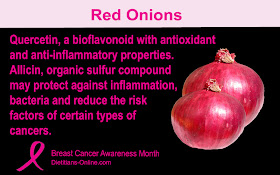Every woman will go through the “change of life,” around 50 years of age plus or minus. This is the time of her last period (or menstruation). Symptoms of menopause vary with every woman. Common symptoms include hot flashes; night sweats; sleep irregularity; mood changes; and possible weight gain around the middle. Some women go through menopause without symptoms.
Due to a decrease in hormone levels and the aging process, many women find themselves gaining weight in their forties and fifties. There is a loss of muscle, which decreases metabolism, and a gain of fat, mainly in the belly area. Lifestyle factors will play an important role in how you handle menopause. Menopausal women tend to be less active and eat more calories than they need.
Nutrition, Eating and
Wellness Guidelines for Menopause
Wellness Guidelines for Menopause
- Maintain a healthy weight; it will decrease your risk of heart disease and other problems.
- Meet your calcium and vitamin D needs. This is important to maintain healthy bones and prevent bone loss that may occur after menopause. Good food sources of calcium include dairy products, such as milk, yogurt and cheese; fortified soy and rice beverages; fortified juices; and canned fish with bones. Good food sources of vitamin D include milk, fortified soy and rice beverages, fortified juices, and fatty fish.
- Be physically active every day. Physical activity helps maintain a healthy weight, keep bones strong and energy levels up, and decrease the risk of heart disease and other age-related complications.
- Some women will try soy and flax in food to help relieve the side effects of menopause. Currently, studies have not proven that soy and flax help.
- Wear lightweight and layered clothes. Body temperature fluctuates from hot to cold.
- Keep a cold glass of water by your side. Due to hot flashes and excessive sweating, it is important to stay hydrated.
- Relax.
- Take time to laugh.
How to Avoid Menopausal Weight Gain
You don't have to gain weight as a result of menopause.
Elizabeth Somer, RD explains how to avoid weight gain after menopause.
Elizabeth Somer, RD explains how to avoid weight gain after menopause.
The Menopause Blues
I Will Not Age
Is It Hot In Here, Or Is It Me?
Resources and References
The
Menopause Diet Plan: A Natural Guide to Managing Hormones,
Health, and Happiness, by Elizabeth Ward, Hillary Wright
Health, and Happiness, by Elizabeth Ward, Hillary Wright
 The International Menopause Society (IMS), in collaboration with the World Health Organization, has designated October 18 as World Menopause Day. To celebrate World Menopause Day, IMS is launching a new campaign to create awareness of understanding weight gain at menopause and the implications it can have on the future health of women in the post-menopausal period.
The International Menopause Society (IMS), in collaboration with the World Health Organization, has designated October 18 as World Menopause Day. To celebrate World Menopause Day, IMS is launching a new campaign to create awareness of understanding weight gain at menopause and the implications it can have on the future health of women in the post-menopausal period. For women aged 55–65 years, weight gain is one of their major health concerns, and many are not aware of the health implications of excessive weight gain, particularly around the abdomen, which is associated with a heightened risk of cardiovascular and metabolic disease and also impacts adversely on health-related quality of life and sexual function.
An educational toolkit of materials has been developed to support local country initiatives throughout the month of October to raise awareness of this potential health issue, and many have been translated into key languages to ensure the campaign has a truly international perspective.
The IMS hopes that national societies will take the opportunity of World Menopause Day to highlight the increasing importance of menopausal health issues by contacting the women of their country to encourage them to talk to their doctors about menopause and its long-term effects.






































